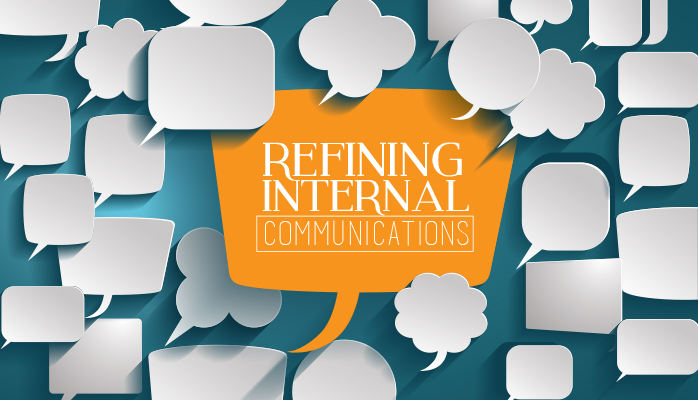“There is no faster way to start and keep rumors alive than to under-communicate with team members.”
I’ve just completed another series of engagements on the subject of engaging community stakeholders. About an hour into my workshop, I begin to dive into the subject of internal stakeholders; of course, I’m talking about hospital employees, or as I prefer to call them, caregivers and organization ambassadors. One of the questions I always pose to the leaders in my sessions is, “How many of you publish a weekly or monthly internal news bulletin?” Because I’ve been doing this for a while, I’m not surprised to see a mere spattering show of hands with more in the audience looking down or around to avoid eye contact with me. I asked the question not to ridicule or judge, but to begin a meaningful conversation about the critical importance of deliberate, strategic, and frequent internal communication.
Here’s why: there is no faster way to start and keep rumors alive than to under-communicate with team members. Lack of consistent, well-branded internal communication contributes greatly to the “us vs. them” mindset that plagues many healthcare institutions. In reality, it’s less about what’s being said and more about what you’re not saying that’s causing internal strife, and, believe it or not, contributing to your outmigration woes. Under-informed employees can do damage to your hospital’s reputation within the community. This is especially true in small and rural areas.
Here’s an example. A CAH is building a multi million-dollar replacement facility on a new site across town while opting to keep its skilled nursing beds and other “non-essential services” in the current location. During a very public groundbreaking, a reporter conducting random interviews asks an employee, who felt she was being left behind, “What do you think about having a new hospital?” Her reply, which made the front page of a local newspaper, was: “Administration doesn’t care about the nursing home patients in this community!” What began as a celebration turned out to be a very somber event. Of course, the CEO and the Board of Trustees cared deeply for the nursing home; in fact, the replacement hospital was the very thing the nursing home needed in order to survive long-term. On a landlocked campus with no chance of expanding revenue-generating services, the nursing home would have been phased out. Unfortunately, this caregiver and others on the team never got that memo, and instead, made up their own stories. It was their version and not the hospital’s that shaped the community’s perception of what was happening.
Healthcare leaders are challenged most during times of organizational change. Nothing can sidetrack progress like employees who are disengaged, distrustful or skeptical of management’s intentions. A well-thought out internal communication strategy can change that and can help facilitate organizational change by transforming disenfranchised workers into focused, engaged employees, inspiring them to deliver the brand and building commitment to the hospital’s mission, vision and goals.
One of the biggest misconceptions about internal communication is that information sharing is communication. Many hospital administrators I’ve worked with over the years have bemoaned the fact that they’re putting lots of information out there, but getting less enthusiasm and support for what they want to do. This is the crux of the problem – confusing information sharing with communication. Telling someone something doesn’t necessarily mean the information is received or understood.
A focused alignment
Strategic internal communication is a purposeful approach to interpreting organizational strategies and issues for your employees and developing messages, methods and systems to reach, engage, and gather support from internal audiences. To maximize internal communications, healthcare executives need to define the role of internal communications beyond disseminating information. This requires a focused alignment of internal communication to hospital goals, engagement of managers at all levels as ambassadors in the communication process, and expert communication professionals to help as strategists and advisors.
Done correctly, internal communications can:
- Provide employees with clear standards and expectations for their work roles
- Help them maintain a shared vision and sense of belonging in the organization
- Assure that they know about items that affect them, their department and organization
- Provide information they need to perform effectively
- Provide feedback on organizational performance, patient perspectives and community perceptions
- Provide support during challenging times – especially induced by culture or organizational change
- Suggest new ideas about work
- Provide emotional support for difficult work.
An internal communication plan (playbook) provides a solid framework for the organization. Without it, your hospital is a disjointed collection of employees working individually to achieve their own goals. With effective internal communication, your hospital becomes a powerful, cohesive unit that can successfully handle transformations and succeed.
Despite how different organizations and people communicate, these core principles of communication always apply:
- Communication is two-way. If information isn’t understood or comprehended the way you meant it, then you haven’t communicated effectively. A good communicator has to empathize with the audience and try to anticipate what they will think and how they will feel about the message they receive.
- Communication isn’t just about words. It can include facial expressions, body language, tone of voice, and overall attitude and tone. A dismissive or condescending attitude or an impatient demeanor may be stronger than the positive message being sent by word. Just say the word “fine” out loud with a smile on your face and an upbeat tone. Now, say it again with your teeth clenched. Sound different?
- Communication can be direct (going directly from the source to the recipient of the message) or indirect (going through a third, fourth or fifth party). Keep in mind that while indirect communication is often necessary, it always carries the risk of being distorted as it passes through your system or network. Email especially is a type of non-verbal communication that can be easily distorted.
- Individuals and groups communicate using different styles and assumptions. People’s gender, age, experience, cultural background, personality type, education and perception, all shape how we send, receive and interpret communication. Sniff test your communications methods. Is what you put out for consumption right for every appetite?
Internal communication is one of the most important aspects of managing change at your hospital. Make sure information flows in all directions and ensure that employees learn immediately about things that interest or affect them. Be open and sensitive to other’s style of communication and check your communication systems and channels regularly to make sure that internal communication is relevant and timely for your employees.
For more information, visit http://www.doitwithimpact.com.







